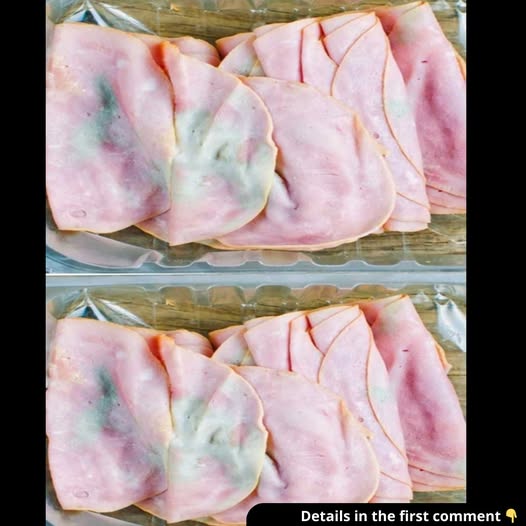We’ve all faced this situation—you open the fridge, grab a package of deli meat, and pause. Something seems off. Maybe it looks a little slimy, smells a bit strange, or just seems past its prime. But your mother-in-law insists that tossing it would be wasteful.
So, what should you do? Should you trust your instincts or take the risk? In this article, we’ll break down everything you need to know about deli meat safety, shelf life, spoilage signs, and proper storage to help you make the safest decision for your family.
Understanding the Shelf Life of Deli Meat
Deli meats don’t last forever. Whether pre-packaged or freshly sliced, they have a limited shelf life, and consuming them past their safe period can be risky. Here’s a general guide:
Pre-packaged deli meat (unopened): Can last up to two weeks in the fridge.
Pre-packaged deli meat (opened): Should be eaten within 7 to 10 days.
Freshly sliced deli meat (from the deli counter): Best if consumed within 3 to 5 days.
Several factors can affect deli meat freshness, including storage temperature, preservatives, and exposure to air. The longer the meat sits in the fridge, the higher the risk of bacteria growth
Signs That Your Deli Meat Has Gone Bad
Trust your senses. If something seems off, it’s best to err on the side of caution. Here are the top warning signs that your deli meat has spoiled:
1. A Slimy or Sticky Texture
One of the biggest red flags is a slimy film on the surface of the meat. This happens when bacteria break down the meat’s proteins, creating a sticky or slippery texture. If it feels slimy—throw it out.
2. A Sour or Rotten Smell
Deli meat should smell neutral or slightly meaty. If you notice a sour, ammonia-like, or rancid odor, it’s a strong indication that bacteria have started to grow. Spoiled meat often smells off before it looks bad, so if it stinks, toss it immediately.
3. Discoloration
Fresh deli meat should have a consistent pink, red, or light brown color (depending on the type). If you notice:
Green, gray, brown, or iridescent colors
Dark or faded patches
Spots that look moldy
…then the meat is no longer safe to eat. Discoloration is a sign of oxidation and bacterial growth
4. Mold Growth
If you see white, green, or black mold spots, the meat has spoiled. Mold can spread beyond the visible spots, so cutting off the affected part won’t make it safe—you need to throw away the whole package.
5. An Off Taste
If the meat looks and smells fine but tastes odd, spit it out immediately. A sour or unusual flavor is a clear sign of spoilage.
The Dangers of Eating Spoiled Deli Meat
You might be tempted to take a chance on slightly questionable deli meat, but the risks outweigh the rewards. Consuming spoiled meat can lead to serious foodborne illnesses, including:
Listeria – A dangerous bacteria that thrives in refrigerated deli meats, potentially causing severe illness, especially in pregnant women, older adults, and those with weakened immune systems.
Salmonella & E. coli – Common foodborne bacteria that cause nausea, vomiting, diarrhea, and stomach cramps.
Staphylococcus aureus – Can lead to food poisoning if present in contaminated deli meat.
Symptoms of food poisoning include nausea, vomiting, diarrhea, fever, and abdominal pain. Severe cases may require medical attention, so it’s better to avoid the risk altogether.
How to Properly Store Deli Meat to Extend Freshness

Keeping deli meat fresh starts with proper storage and handling. Follow these tips to keep your deli meat safe for longer:
1. Keep It Cold
Store deli meat in the coldest part of your refrigerator, ideally at or below 40°F (4°C). Never leave it at room temperature for more than two hours, as bacteria multiply rapidly in warm conditions.
2. Use Airtight Packaging
Once opened, transfer deli meat to an airtight container or wrap it tightly in plastic wrap or aluminum foil to prevent exposure to air, which speeds up spoilage.
3. Label and Date
To track freshness, write the opening date on the package. This simple habit prevents you from accidentally consuming old and unsafe deli meat.
4. Freeze If Necessary
If you’re not planning to eat the deli meat within a few days, freeze it. Frozen deli meat stays good for 1–2 months, but for best quality, wrap it tightly in plastic wrap and a freezer-safe bag to prevent freezer burn.
Alternatives to Throwing Away Questionable Deli Meat

If you’re reluctant to waste food but unsure if the deli meat is safe, consider these alternative uses:
Cook It Thoroughly – If the meat isn’t slimy or moldy but slightly old, cooking it at high heat can kill some bacteria. Add it to a hot sandwich, omelet, or soup.
Compost It – If you have a composting system that allows meat, this can be an eco-friendly way to dispose of it.
Feed It to Pets (With Caution) – Some pets can eat small amounts of plain cooked deli meat, but avoid feeding them anything questionable.
Conclusion: When in Doubt, Throw It Out
Deli meat doesn’t last forever, and eating questionable slices can put your health at risk. If it smells bad, looks off, feels slimy, or has mold—don’t take chances. Proper storage and handling can help extend its shelf life, but when in doubt, it’s always best to be safe rather than sorry.
Trust your senses, store your food properly, and prioritize your health over waste—because no sandwich is worth the risk of food poisoning



